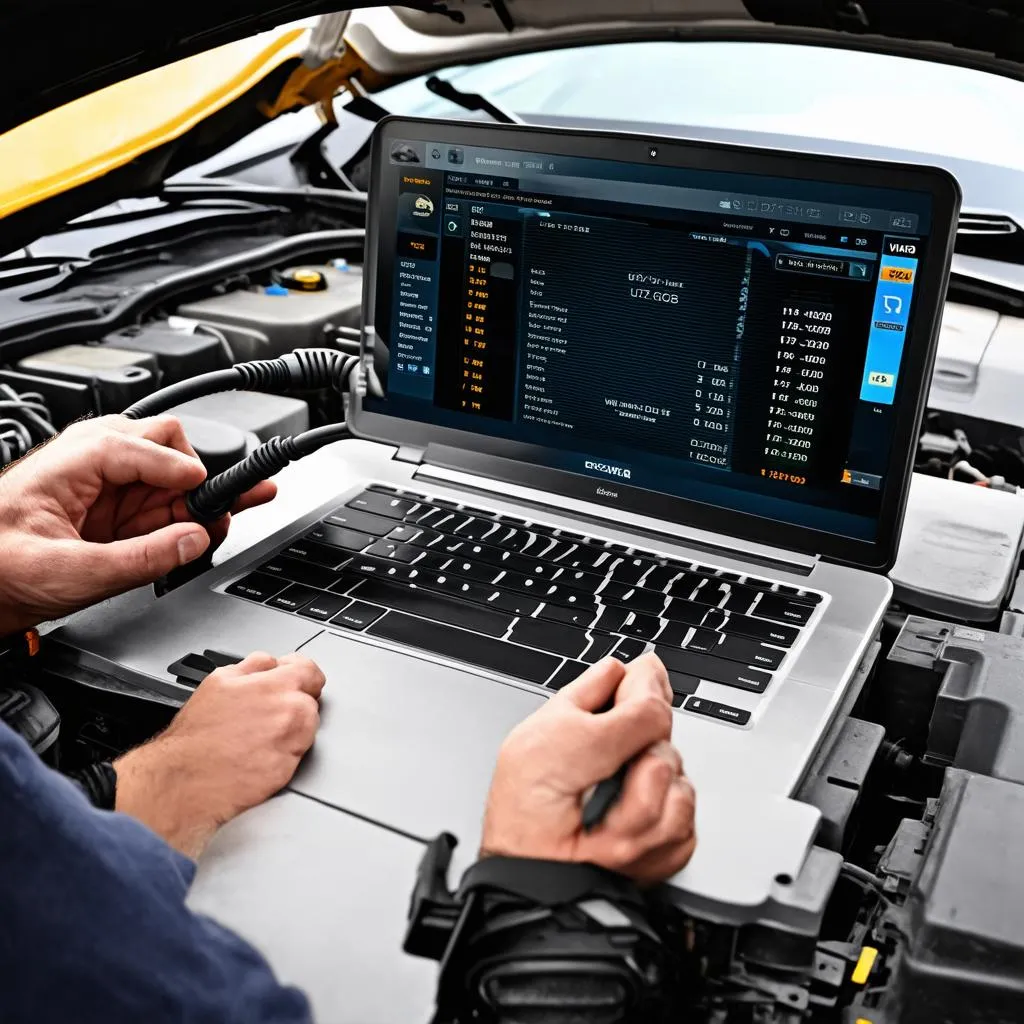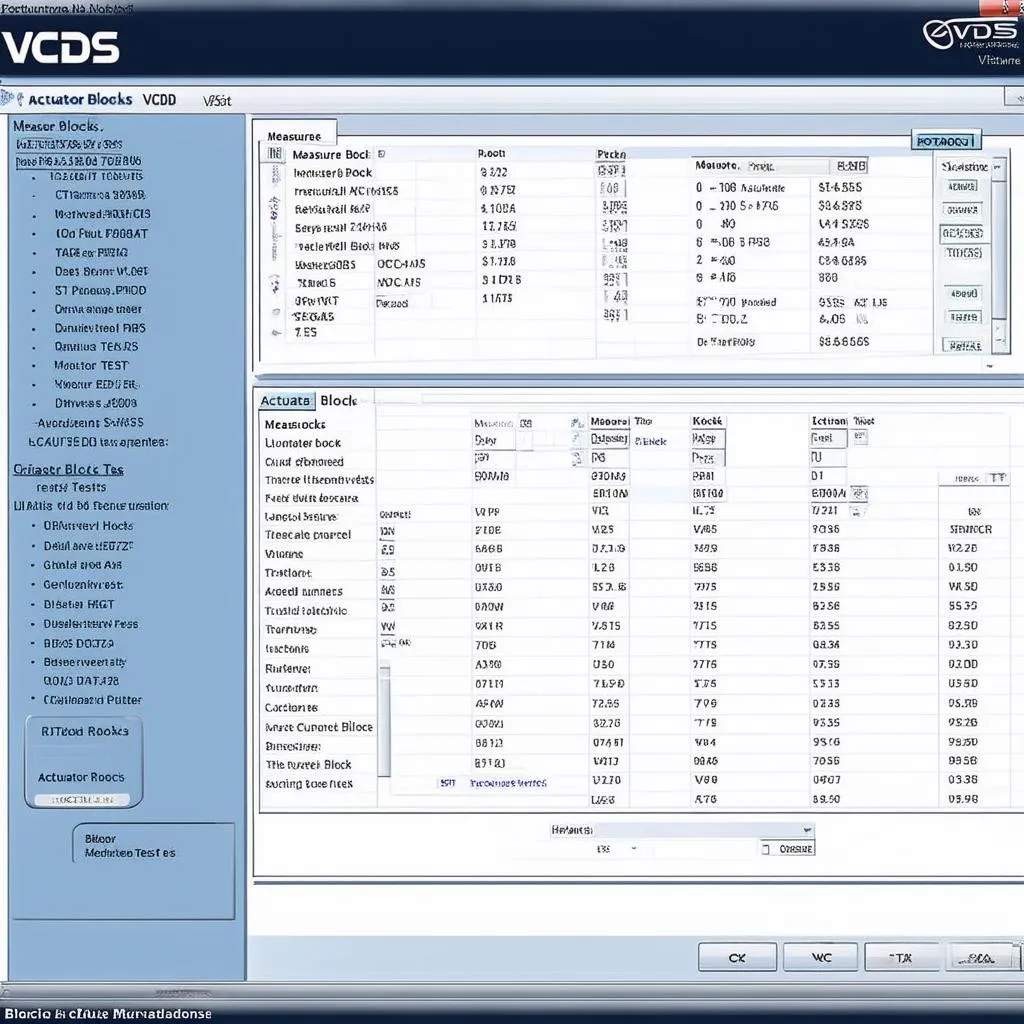VCDS MAP Sensor Test: A Comprehensive Guide for European Car Owners
Have you ever encountered a sudden drop in your car’s performance, accompanied by a strange engine noise? You might be facing a problem with your MAP sensor, a crucial component in your car’s engine management system. This sensor plays a vital role in determining the air pressure in the intake manifold, which helps your car’s engine deliver optimal performance.
In this comprehensive guide, we’ll delve into the intricacies of “Vcds Map Sensor Test” and explore everything you need to know about troubleshooting and potentially resolving this critical issue.
Understanding the Importance of MAP Sensor Testing
What does a MAP sensor do?
The manifold absolute pressure (MAP) sensor is a key player in your car’s engine management system. Its primary function is to measure the air pressure in the intake manifold, which is then used to calculate the amount of fuel that needs to be injected into the engine for optimal combustion.
Why is it important to test the MAP sensor?
A malfunctioning MAP sensor can lead to various performance issues, including:
- Reduced engine power: The engine may struggle to deliver its usual horsepower, causing sluggish acceleration and overall poor performance.
- Rough idling: The engine may idle unevenly or stall, leading to a jarring experience.
- Fuel consumption issues: The engine might consume more fuel than usual, resulting in a drop in fuel efficiency.
- Check engine light: A faulty MAP sensor will likely trigger the check engine light, indicating a problem that needs attention.
What are the common symptoms of a faulty MAP sensor?
Many car owners may experience a combination of these symptoms. However, it’s essential to note that these symptoms can also be attributed to other engine issues. Therefore, a thorough diagnosis using VCDS is crucial.
What is VCDS?
VCDS, short for “Volkswagen Coding, Diagnostics, and Service,” is a powerful diagnostic tool that allows users to communicate with the control modules of a wide range of Volkswagen, Audi, Seat, and Skoda vehicles. It offers a comprehensive range of functions, including:
- Reading and clearing fault codes
- Performing live data readings
- Coding and customizing vehicle settings
- Performing actuator tests
Why is VCDS important for MAP sensor testing?
Using VCDS for MAP sensor testing allows you to:
- Identify the root cause: VCDS can help pinpoint the issue, whether it’s a faulty sensor or a problem with the wiring or control module.
- Perform live data readings: VCDS enables you to monitor the MAP sensor readings in real-time, helping you identify any inconsistencies or anomalies.
- Test the sensor’s functionality: VCDS allows you to perform actuator tests, which can help verify the sensor’s response and determine if it’s functioning correctly.
A Step-by-Step Guide to VCDS MAP Sensor Testing
Step 1: Connect VCDS to Your Vehicle
Connect the VCDS cable to your vehicle’s OBD-II port, which is usually located under the dashboard, near the steering column. Ensure a secure connection for optimal data transfer.
Step 2: Select the Vehicle Module
Navigate through the VCDS interface and select the “Engine” module, which houses the MAP sensor data.
Step 3: Read Fault Codes (if any)
Use the VCDS “Measure Blocks” function to check for any fault codes related to the MAP sensor.
Step 4: Perform Live Data Readings
Access the live data readings for the MAP sensor. You will typically find the MAP sensor readings under the “Engine” module’s “Measure Blocks” or “Live Data” section.
Step 5: Analyze the Data Readings
Analyze the data readings to determine if the MAP sensor readings are within the expected range. Look for any inconsistencies or fluctuations that might indicate a faulty sensor.
Step 6: Perform Actuator Tests
Utilize the VCDS “Actuator Tests” function to test the MAP sensor’s response. This involves sending commands to the sensor and observing its response.
Step 7: Interpretation of Results
Based on the fault codes, live data readings, and actuator test results, interpret the findings and determine if the MAP sensor is faulty.
Step 8: Troubleshooting and Resolution
If the VCDS test reveals a faulty MAP sensor, it’s time for troubleshooting and resolution. This might involve:
- Replacing the MAP sensor: This is the most common solution, as it’s usually a straightforward process.
- Checking for wiring issues: Inspect the wiring connections for any loose wires, corrosion, or damage.
- Diagnosing the control module: If the wiring appears to be in good condition, the control module may be faulty and require replacement.
Step 9: Verification and Post-Test
After replacing the sensor, performing repairs, or addressing other issues, it’s crucial to repeat the VCDS test to ensure the problem has been resolved.
Common Questions and Answers
How often should I test my MAP sensor using VCDS?
Regularly checking your MAP sensor is not required unless you encounter any of the symptoms mentioned above. If you suspect a problem with your car’s performance, running a VCDS test is a good preventative measure.
Can I perform a MAP sensor test without VCDS?
While there are alternative methods, using VCDS offers a comprehensive and accurate assessment. Performing a test without VCDS may not provide enough information to accurately diagnose the issue.
Is it safe to perform a VCDS MAP sensor test myself?
VCDS is generally safe for use by individuals with some technical expertise. However, if you’re unsure about the procedure, it’s best to seek professional assistance from a qualified technician.
What are some other diagnostic tools that can be used for testing the MAP sensor?
While VCDS is widely recommended for European vehicles, other tools like:
- OBD2 scanners: These scanners can read fault codes and offer basic live data readings. However, they may not have the same level of functionality as VCDS.
- Multimeters: Multimeters can measure the electrical signals from the sensor, but this requires advanced knowledge of automotive electrical systems.
Tips for Successful VCDS MAP Sensor Testing
– Stay informed: Consult with reliable online resources, like “Ross Tech VCDS Repair Manual” or “VCDS Block 32,” to deepen your understanding of MAP sensor testing.
– Embrace Patience: The VCDS test process may require some time and patience, especially if you’re new to using this diagnostic tool.
– Seek Expert Guidance: If you encounter any difficulties during the testing process or have any concerns, it’s always wise to consult with a qualified technician.
– Prioritize Safety: Ensure a safe environment before performing any diagnostic or repair procedures, as there may be potential risks involved.
Unlocking the Mysteries of Your Vehicle’s Performance
By understanding the significance of the MAP sensor and harnessing the power of VCDS, you can effectively diagnose and resolve any issues related to your vehicle’s performance.
Remember, a well-functioning MAP sensor is crucial for optimal engine performance, fuel efficiency, and overall driving enjoyment.
Next Steps:
- Explore further: Dive deeper into the intricacies of VCDS by exploring our other articles, such as “VCDS Test MAP Sensor,” “VCDS Boost Leak,” and “VCDS Block 32.”
- Reach out: Don’t hesitate to contact our team of experts via Whatsapp: +84767531508 for any questions or assistance with your VCDS diagnostic journey.
 VCDS MAP sensor test
VCDS MAP sensor test
 MAP sensor replacement
MAP sensor replacement
 VCDS interface
VCDS interface
By understanding the importance of the MAP sensor, mastering the art of VCDS testing, and seeking expert guidance when needed, you can confidently navigate the world of European car maintenance and ensure your vehicle performs at its best.
